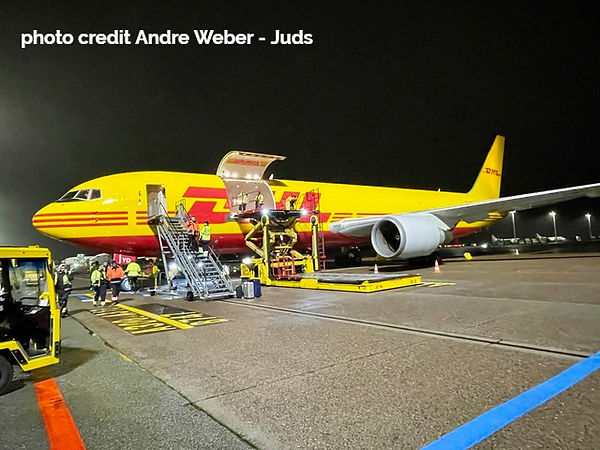
AIRWEETS.com

The new Commission Delegated Regulations (EU) 2025/20: A Double-Edged Sword for Airlines and Ground Handling Companies
With some delay, EASA have introduced their first ever ground handling safety regulations. While the 39-pages Regulation (EU) 2025/20 applies to organisations providing ground handling services, the much shorter Regulation (EU) 2025/24 amends Regulation (EU) 965/2012 – commonly known as “EASA Air Operations” – with requirements for aircraft operators related to ground handling activities.
As both regulations will only apply from 27 March 2028, service providers and aircraft operators have three years to become fully compliant at EU airports, reducing some burden on the latter. The new regulations cover a full range of services (including boarding, loading, refuelling, cleaning and towing). Good news is it also includes the introduction of safety management systems and mandated training. Of course, EASA reminds us that the overall safety of the aircraft will still remain the operator’s responsibility.

What is under the scope of the rules?
The scope of the new ground handling regulations covers all the activities that take place on the ground to prepare an aircraft, its passengers and cargo for departure and arrival. Those activities are:
-
Aircraft loading and unloading with cargo, mail, and baggage;
-
passenger embarkation and disembarkation;
-
coordination of the aircraft turnaround;
-
de-icing and anti-icing;
-
refuelling;
-
aircraft cleaning;
-
securing the aircraft on the ground during turnaround, pushback, and towing;
-
other services including potable water servicing and toilet servicing.

Advantages of Regulation (EU) 2025/20
Enhanced safety standards: One of the primary goals of the regulation is to improve safety protocols within the aviation sector. By enforcing stricter guidelines for ground handling operations, the regulation aims to reduce the risk of accidents and incidents, ultimately safeguarding ground handling staff, passengers and crew.
Operational efficiency: The regulation introduces standardised procedures for ground handling services, which can lead to increased efficiency. For airlines, this means quicker turnaround times and improved scheduling, allowing them to optimise their operations and potentially increase profitability.
Environmental sustainability: With a growing emphasis on reducing carbon footprints, the regulation encourages airlines and ground handling companies to adopt greener practices. This includes the use of eco-friendly ground support equipment and initiatives aimed at minimising waste, which aligns with the broader EU goals of achieving sustainability in transport.
Increased transparency: The regulation mandates better data sharing and reporting practices between airlines and ground handlers. This transparency can enhance accountability and foster collaboration, ultimately leading to improved service quality.
Competitive advantage for compliant companies: Airlines and ground handling companies that swiftly adapt to the new regulations may gain a competitive edge. By showcasing their commitment to safety and sustainability, these companies can attract environmentally conscious customers and partners.
Challenges of Regulation (EU) 2025/20
Increased operational costs: Compliance with the new regulations will require significant investments in training, equipment, and technology. For many airlines and ground handling companies, these costs could strain budgets, particularly for smaller operators with limited resources.
Implementation challenges: The transition to new operational standards can be complex. Airlines and ground handlers may face challenges in adapting their existing processes, which could lead to temporary disruptions in service and operational delays.
Regulatory burden: The additional compliance requirements may create a heavier regulatory burden for airlines and ground handling companies. This could divert resources away from core business activities, affecting overall productivity and profitability.
Potential for market consolidation: As smaller operators struggle to meet the new standards, there may be a trend toward market consolidation. Larger companies with more resources may acquire smaller firms, potentially reducing competition in the ground handling sector and leading to higher prices for airlines.
Uneven impact across the industry: The regulation may not affect all airlines and ground handling companies equally. Larger airlines with established processes may adapt more easily than smaller carriers, potentially leading to a disparity in service quality and operational capabilities across the industry.
Conclusion
The Regulation (EU) 2025/20 presents a mixed bag of opportunities and challenges for both airlines and ground handling companies. While the regulation aims to enhance safety, efficiency, and sustainability, the associated costs and implementation hurdles cannot be overlooked. As the aviation industry navigates this new regulatory landscape, stakeholders must strategically assess their operations and adapt accordingly to thrive in an evolving environment. The successful integration of these regulations will ultimately depend on collaboration, innovation, and a commitment to excellence in service delivery.